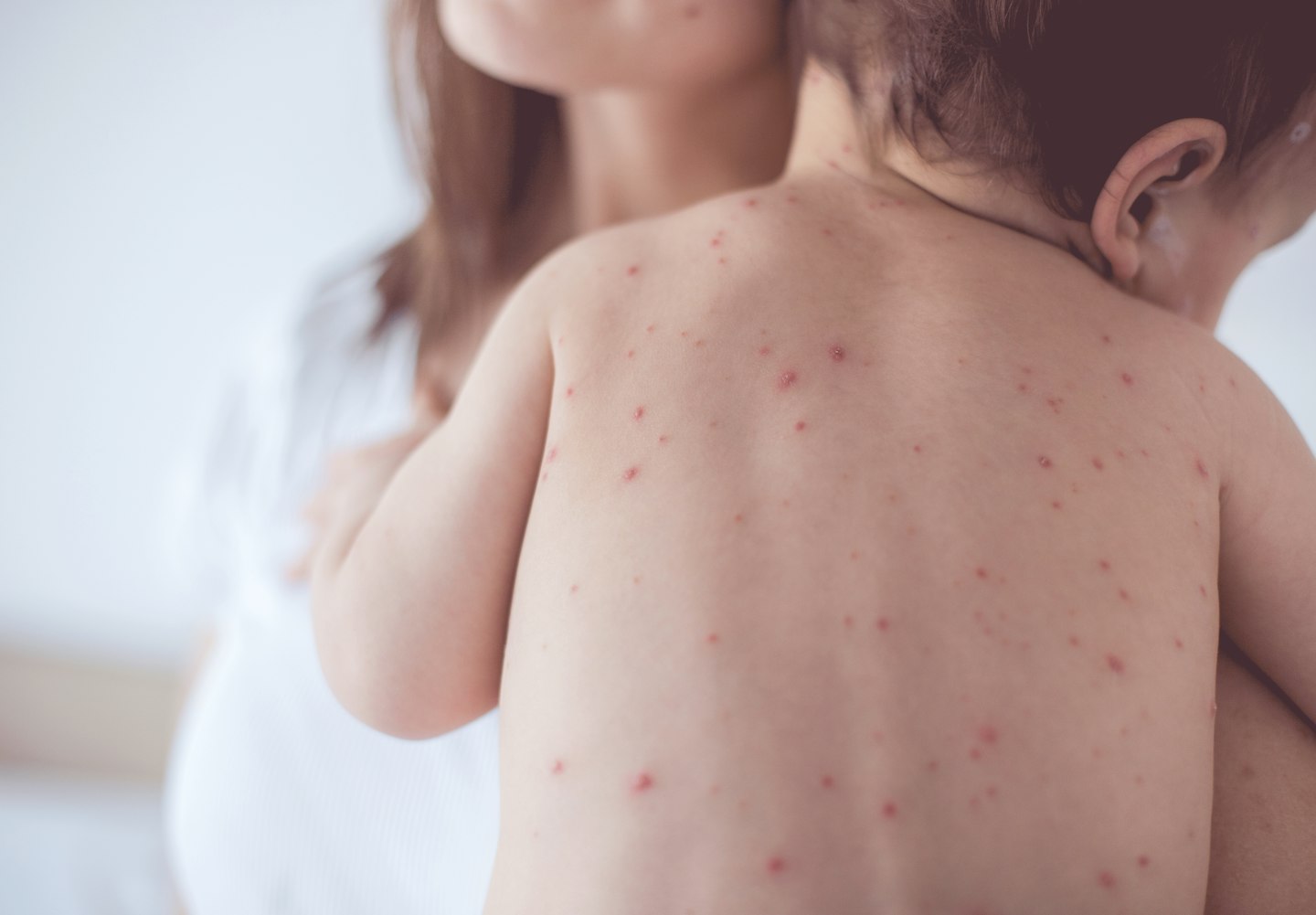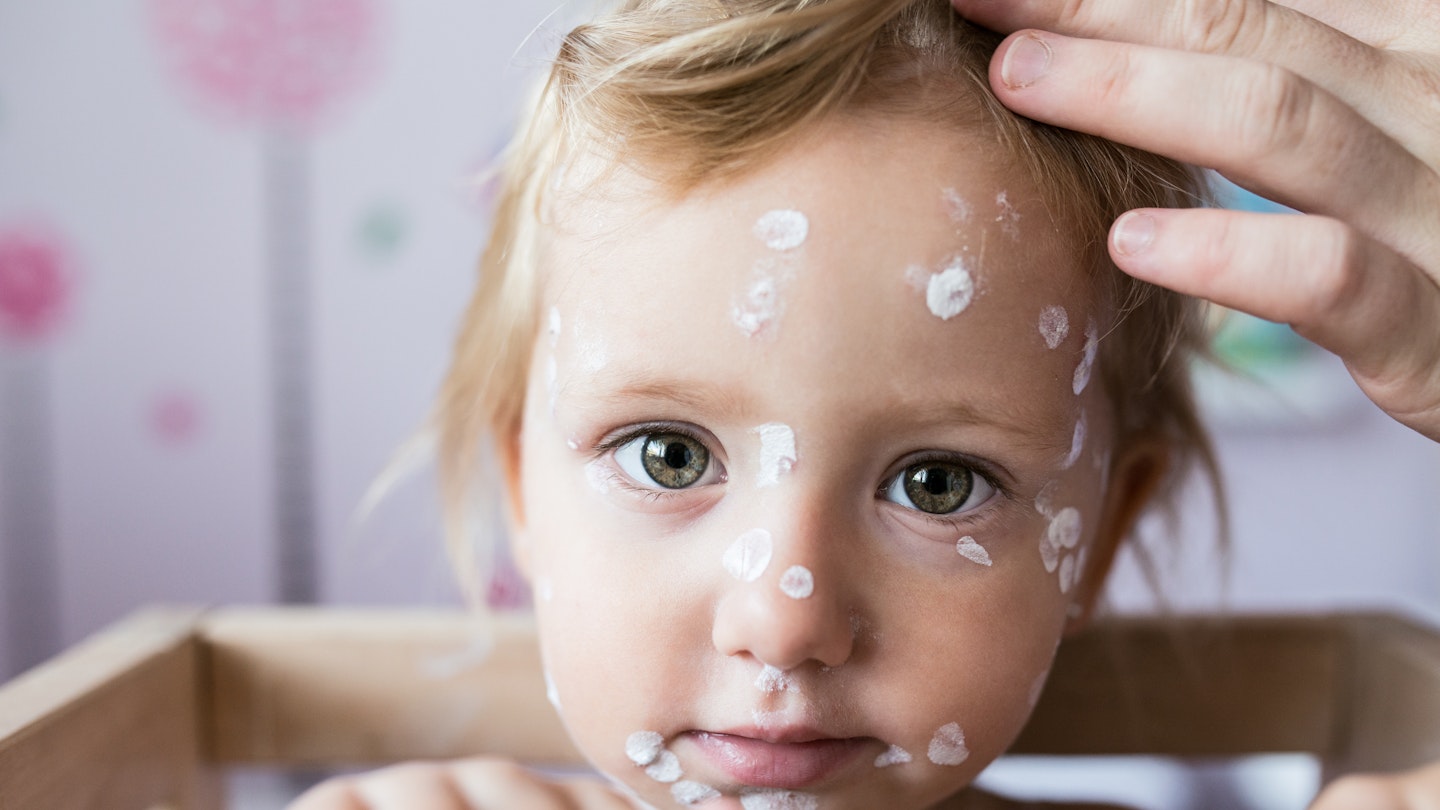Worried it’s chicken pox? Understand the causes, symptoms and treatment with our expert overview of the condition.
In this article skip to:
-
You can spot chicken pox before the rash appears - here are the symptoms to look out for
-
You've realised your child has chicken pox - what should you do now?
-
Worried your child seems a bit too poorly? Here's what to do if you're in doubt
-
What to do if you've been in contact with a child with chicken pox and you're pregnant
Chicken pox is a common childhood illness that features a rash of itchy red spots that turn into fluid filled blisters and eventually form scabs and drop off. Some children have just a few spots while others are covered in them. It is caused by the varicella zoster virus, is most common in children under ten and is easily spread in nurseries and schools. It is often confused with measles which has slightly different symptoms.
Although chicken pox is common, it can leave your little one feeling rather uncomfortable with itchy red spots. They usually clear up in a week or so, but it can be dangerous for some people, including pregnant women, newborn babies and those with a weakened immune system. 90 per cent of adults are immune to chicken pox because they’ve already had it as a child but if you do have it as an adult the symptoms can be more severe.
More related articles:
-
How to spot a gluten intolerance and coeliac disease in your toddler
-
The best baby eczema creams for prevention, treatment, and cleansing
What are the signs and symptoms of chicken pox?
Before the spots appear many children have mild flu-like symptoms including:
-
a headache
-
a temperature (in the 38.3° to 38.8° region)
-
feeling sick
-
aching muscles
-
clusters of small itchy red spots commonly starting on the back, belly or face and later moving to the scalp, chest, arms and legs though they can appear anywhere - even in the mouth, genitals and ears. The spots can appear worse in children with eczema.
The spots quickly become blisters and are at their itchiest 12-14 hours after they appear. New spots appear in waves for three to five days. They generally clear up within a week or two of scabbing over. It's worth noting, your little one is contagious until all the blisters have scabbed over, which is normally five to six days after the rash first appeared.
The virus that causes chicken pox lays dormant in your body’s nerve tissues and can return in later life as shingles. It is possible to catch chicken pox from someone who has shingles but not the other way round.
What does the chicken pox rash look like?

The rash will begin as small red bumps on the skin that look like insect bites or little spots. These red bumps will usually appear on the skin over 2-4 days before developing into small blisters filled with fluid. The blisters will then turn into scabs that are usually red or brown in colour.
What causes chicken pox?
Chickenpox is caused by a virus called varicella-zoster (varicella is the medical name for chickenpox). If your baby hasn’t already had chicken pox, there’s a 90 per cent chance of her getting it if she comes in contact with the infection.
This contagious bug is sneezed and breathed around, just like the common cold. It takes seven to 21 days for the symptoms of chicken pox to show after your baby comes into contact with the virus.
You can also catch chicken pox from:
-
touching a contaminated surface
-
touching contaminated bedding or toys (which is why it is so common for all of your children to suffer with chicken pox at the same time)
-
touching the chicken pox or shingles rash
-
face-to-face contact with an infected person
-
being in the same room as someone with chicken pox for more than 15 minutes
What can you do if your child has chicken pox?
Call your GP so the infection can be noted on your child’s medical records, but don’t take her to the surgery – chickenpox is highly infectious, so unless your baby is severely unwell, your GP will probably ask you to treat your baby at home. Your baby will be infectious from around two days before the rash appears.
When it comes to treating the chicken pox and helping your baby feel more comfortable, try the following:
-
Use paracetomol to relieve fever and discomfort. The NHS urges parents NOT to use medications containing ibuprofen as these can make those suffering with chicken pox feel much worse.
-
Use calamine lotion and cooling gels to soothe the itching and dress your baby in loose cotton clothing.
-
Pat the skin rather than scratching it - it's important to try and discourage your toddler from scratching as this can cause problems later on.
-
Stay hydrated.
-
Encourage your todler to cover her mouth if she coughs or sneezes to prevent other people catching the bug.
-
If your toddler has blisters in their mouth, sugar-free ice-lollies are particularly soothing.
Worried about chicken pox? When you should phone your GP
Complications are rare in healthy children, but it's still good to know when to contact your GP. According to the NHS, you should phone your GP if:
-
You're not sure if yours or your baby's rash is chicken pox - if in doubt, check as chicken pox can be highly contageious and dangerous to pregnant women and elderly people.
-
Your baby is less than four weeks old and you are worried she might have chicken pox.
-
Your baby's symptoms haven't improved in six days.
-
You're an adult and you've got chicken pox.
-
If the area surrounding a blister becomes red, sore or hot - this could be a sign of infection.
-
If your toddler is dehydrated.
-
Very rarely chicken pox can lead to complications of the brain and spinal cord such as meningitis or encephalitis. Signs can include drowsiness, vomiting, headache, a stiff neck, seizures and behavioural changes. If you notice any of these speak to your GP immediately.
Chicken pox in pregnancy
If you are pregnant and your child contracts chicken pox you should also see your doctor. If you are infected with chickenpox during the first 28 weeks of your pregnancy there is a small risk that your unborn baby could develop a condition known as foetal varicella syndrome, which can cause scarring, eye defects (such as cataracts), shortened limbs and brain damage.
The chicken pox vaccine protects against the varicella zoster virus that causes chicken pox. This is not currently part of the routine NHS vaccination programme and is only offered to those in close contact with someone who is particularly vunerable to chicken pox. There are two chickenpox vaccines currently available to children 12 months and over. The brand names being VARIVAX and VARILRIX.
At present those offered it on the NHS are normally patients who:
-
take long-term steroid tablets
-
are having chemotherapy
-
have had their spleen removed
-
have had an organ transplant and are using immunosuppressant medicines
-
have been diagnosed with HIV or AIDS
The NHS also recommended the vaccination for:
-
brothers and sisters of a child who has leukaemia
-
a child whose parent is having chemotherapy
Our childcare expert Fi Star Stone weighed up the pros and cons of purchasing the chicken pox vaccine here.
What is the difference between chicken pox and shingles?
Chicken pox and shingles are connected as they are both caused by the varicella-zoster virus. Some people who have chicken pox as a baby will still catch shingles when they are an adult, but you cannot get chicken pox twice. As we mentioned above, you cannot catch shingles from someone else, however you can catch chicken pox from someone suffering from shingles if you have not had chicken pox before.
According to the NHS, it is estimated one in four adults will suffer from shingles during their lifetime. It is not known why some people catch shingles, but in most cases it is thought to be because of a weakened immune system.
Subscribe to Mother&Baby magazine for expert tips, must-have products and invaluable advice for mums, delivered straight to your door and join our Facebook group #MumTribe to speak with real mums.
